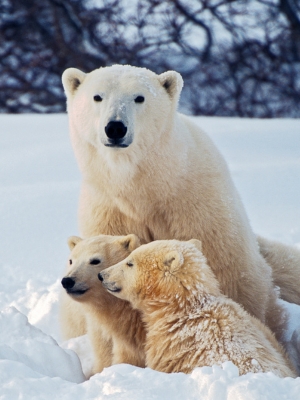Zimbabwe and Namibia have just announced plans to slaughter hundreds of wild elephants and other animals to feed starving citizens during severe drought conditions. Drought conditions have been worsened by the El Niño effect this year; El Niño is a climate pattern that occurs every two to seven years, usually lasting between nine and 12 months, and can cause extreme weather events like floods and hurricanes.
Shortly after the announcement of these decisions, Born Free USA, along with dozens of other non-governmental organizations (NGOs), released a statement opposing the killing of these wild animals to provide meat for drought-stricken citizens. Click here to read it!
Poor Weather Conditions and Competition for Resources Are Hitting the Region Hard
The Zimbabwe National Parks and Wildlife Management Authority announced recently that it would allow the killing of 200 elephants so that their meat can be distributed among needy communities. Similarly, Namibia has approved of killing more than 700 wild animals (including 83 elephants, 30 hippos, 60 buffalos, 50 impalas, 300 zebras, and 100 elands, among others) as part of a plan announced several weeks ago to help the people impacted the most by severe weather conditions.
Adding to the issue of drought is the competition for resources like food and water between humans and elephants in the affected areas; the population of elephants in Zimbabwe has doubled in recent years, increasing from around 50,000 elephants to almost 100,000. The larger elephant population and less space available for humans to coexist with them from human use of land and resources across their habitat has prompted some officials to refer to the elephant population here as “unsustainable.” man use of land and resources across their habitat has prompted some officials to refer to the elephant population here as “unsustainable.”
Slaughtering Wildlife Is Not the Solution
While the issue of human starvation must be urgently addressed, experts have raised concerns about killing elephants and other animals not typically used for human consumption as a “solution.” First, the mass killings may increase illegal poaching activity and reinvigorate the ivory trade after years of hard work to end these horrific practices, which nearly led to the extinction of elephants across Africa in the early 2000s.
Second, the decision itself to kill 200 elephants to feed starving people has been deemed “unsustainable.” According to Farai Maguwu, Executive Director at the Centre for Natural Resource Governance (a Zimbabwean association promoting responsible natural resource management): “We have six to seven million people who need food aid, 200 elephants won’t change anything. We argue that the decision is unsustainable and does very little to address the drought effects or the conservation cause.” Indeed, these animals are not a renewable resource in the way this decision would make them out to be.
Third, killing animals that help boost these countries’ tourist economies seems like an illogical “solution.” For example, tourism is Zimbabwe’s third largest sector after mining and agriculture, playing a significant role in Zimbabwe’s economic recovery. Zimbabwe has several popular national parks and natural attractions such as Hwange National Park, Mana Pools, Gonarezhou National Park, Victoria Falls, Lake Kariba, and the Great Zimbabwe National Monument. Statistics from the Zimbabwe Tourism Authority (ZTA) show that tourist arrivals to Zimbabwe are substantial: the tourism sector generated an estimated $911 million in 2022, and in 2019, nature-based tourism, which includes wildlife tourism, contributed to ~70% of Zimbabwe’s total tourism receipts, totaling $878 million in USD. Therefore, maintaining the animals native to Zimbabwe and its natural spaces continues to be a key draw for tourists in the future.
Lastly, culling as a conservation management strategy has proven largely ineffective; the Kruger National Park 27-year culling program removed nearly 17,000 elephants, but did not reduce their impact in the long run. The decision to cull elephants would also be a major policy reversal; culling was carried out in Zimbabwe and South Africa between the mid-1960s and the mid-1990s, but was later rejected by animal advocates due to the cruelty and trauma associated with the process.
Compassionate Alternatives Exist
Experts suggest that there are other ways to address the drought and hunger conditions currently impacting Zimbabwe and Namibia. One suggestion made by conservationists is to drill more boreholes (deep, narrow holes made into the ground to locate water) that both humans and wildlife could access in the affected areas to increase water availability. Birth control has also been used to control breeding in wild herds, though the effects in larger populations have yet to be explored.
Another possible solution would be to relocate elephants to national parks with fewer animals rather than killing them. This would alleviate competition for water resources while preserving the animals’ lives.
There is a pressing need for quick solutions to the cascade of issues surrounding the drought, but killing animals en masse will neither provide a meaningful short-term fix nor solve any of the root problems, including climate change, resource use, unequal distribution of wealth, and human-wildlife conflict, among other things.
Although the population of elephants in places like Zimbabwe are flourishing, African forest elephants’ conservation status remains Critically Endangered; concerningly, the number of African forest elephants dropped by more than 86 percent over a period of 31 years, while the population of African savanna elephants fell by at least 60 percent over the past half a century. African savanna elephants are categorized as Endangered. Their populations have declined by at least 60% across the continent over the last 50 years.
We, along with dozens of other animal advocates, wildlife trade experts, and conservation scientists, urge the governments of Zimbabwe and Namibia to withdraw plans to cull elephants and other wildlife and explore these and other compassionate alternatives rather than turning to slaughter.
We also call on donor governments and agencies to implement effective and sustainable measures to ensure food security and human-wildlife coexistence, while also protecting increasingly threatened wildlife populations.
Keep Wildlife in the Wild,
Devan
Dear Reader,
We are a nonprofit committed to wildlife conservation, welfare, and rescue. Making resources free and widely distributed, like our news items, is an important part of our mission. If you found this article helpful, enjoyable, or enlightening, please donate to help keep these resources available, and Keep Wildlife In The Wild.
Thank You,
The Born Free USA Team

 Dear Reader,
Dear Reader,